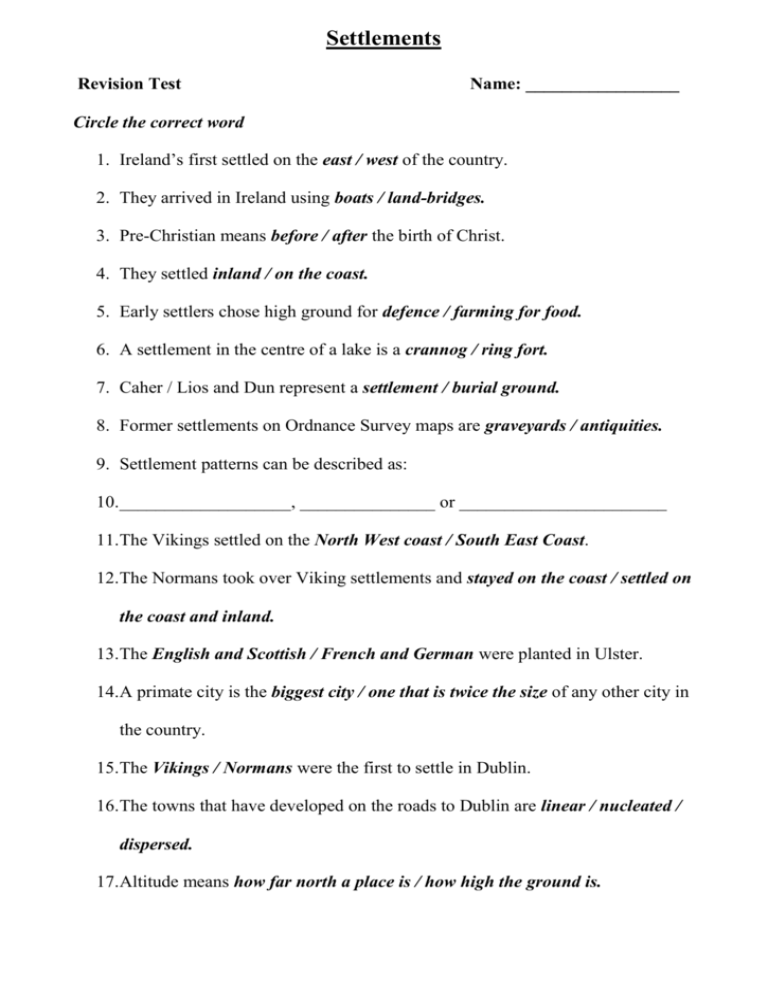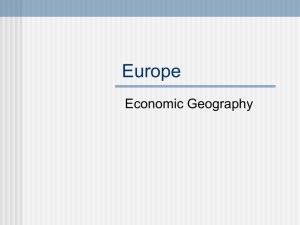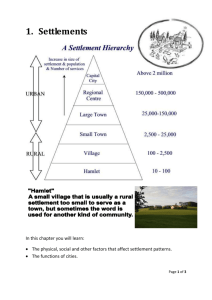Settlements - s3.amazonaws.com
advertisement

Settlements Revision Test Name: _________________ Circle the correct word 1. Ireland’s first settled on the east / west of the country. 2. They arrived in Ireland using boats / land-bridges. 3. Pre-Christian means before / after the birth of Christ. 4. They settled inland / on the coast. 5. Early settlers chose high ground for defence / farming for food. 6. A settlement in the centre of a lake is a crannog / ring fort. 7. Caher / Lios and Dun represent a settlement / burial ground. 8. Former settlements on Ordnance Survey maps are graveyards / antiquities. 9. Settlement patterns can be described as: 10.___________________, _______________ or _______________________ 11.The Vikings settled on the North West coast / South East Coast. 12.The Normans took over Viking settlements and stayed on the coast / settled on the coast and inland. 13.The English and Scottish / French and German were planted in Ulster. 14.A primate city is the biggest city / one that is twice the size of any other city in the country. 15.The Vikings / Normans were the first to settle in Dublin. 16.The towns that have developed on the roads to Dublin are linear / nucleated / dispersed. 17.Altitude means how far north a place is / how high the ground is. 18.Most of Irelands towns are located under 200m / 1000m above sea level. 19.If an area on an OS map is flat with no rivers or streams it is well drained / marshland. 20.A dry-point site is on a hill / beside a river but doesn’t flood. 21.The lowest bridging point of a river is usually the closest to the coast / the furthest inland. 22.There is a higher density of larger towns in the east / west of Ireland. 23.Lands reclaimed from the sea are polders / dykes. 24.Walls surrounding reclaimed land are polders / dykes. 25.60 % of Dutch / Swedish people live on polders below sea level. 26.Polders for agriculture are planned in a linear / clustered / dispersed pattern with clusters of farmhouses. 27.An area called Ijsselmeer in Holland / Norway has many polders. 28.Settlements on polders have also been arranged in a cartwheel / diamond pattern. 29.Medieval walls around a town is evidence of a port / defence function. 30.An abbey, monastery or cathedral is evidence of residential / ecclesiastical settlement. 31.Waterford was a walled Viking / Norman town in the 11th Century. 32.Waterford has remains of ancient walls. This is evidence of a defence / port function. 33.Imports and exports are loaded and unloaded in Waterford, it therefore has a port / ecclesiastical function. Marks /33







